News
Can Government Temperature Data Be Trusted?, Asks SPPI
In several recent papers, The Science and Public Policy Institute (SPPI) has raised serious concerns for policy makers and the public as to whether the “adjustments” that government funded employees continue making to raw temperature data can be trusted. Intentional or not, the adjustments introduce an enhanced warming bias to the thermometer-based measurements. Continuing concerns about government tampering with official temperature data are further addressed in a new SPPI paper, Contiguous U.S. Temperature Trends Using NCDC Raw and Adjusted Data for One-Per-State Rural and Urban Station Sets, by Dr. Edward Long.
Observes SPPI President, Robert Ferguson, “For years, non-government scientists and researchers have expressed the need to have the validity of government temperature adjustments audited. The ongoing revelations about shoddy science and data handling practices at government funded institutions like the CRU and IPCC enhance the urgency for an unbiased investigation.
For example, a 2002 paper by researchers Balling and Idso reported that government adjustments being made to the raw temperature data were "producing a statistically significant, but spurious, warming trend" that "approximates the widely-publicized 0.50°C increase in global temperatures over the past century."
Both the Goddard Institute for Space Science (GISS) and the National Climatic Data Center (NCDC) have come under increasing scrutiny and criticism – see Surface Temperature Records: Policy Driven Deception? – for their station selections and the protocols used for adjusting raw (thermometer-measured) data. The outcome of the ongoing tampering with raw data is an appearance of significant warming in the contiguous 48 States, where only modest warming may actually have occurred.
Writing in Contiguous U.S. Temperature Trends Using NCDC Raw and Adjusted Data for One-Per-State Rural and Urban Station Sets, Dr. Edward Long states, “The problem would seem to be the methodologies engendered in treatment for a mix of urban and rural locations; that the ‘adjustment’ protocol appears to accent to a warming effect rather than eliminate it. This, if correct, leaves serious doubt for whether the rate of increase in temperature found from the adjusted data is due to natural warming trends or warming because of another reason, such as erroneous consideration of the effects of urban warming.”
Dr. Long observed that the government’s “adjustments” eradicated the difference between rural and urban environments, thus hiding urban heating. The consequence, reports Long, “is a five-fold increase in the rural temperature rate of increase and a slight decrease in the rate of increase of the urban temperature.” What Long found so striking was the magnitude of the changes that had to be made to the raw rural data in order to arrive at the government’s adjusted values.
Dr. Long’s analysis of the government data tampering concludes that NCDC “has taken liberty to alter the actual rural measured values.” The rural values were systematically adjusted upward above their actual raw values, more so further back in time and less so for the more current years. At the same time the urban temperatures were adjusted only a little, or not at all, from their raw values. The result is an implication of warming that has not occurred in nature (in areas further away from large cities), but indeed has occurred in urban settings, as more people moved into cities and cities grew in size, became more industrial in nature, and had more air conditioning exhausts, cars, well heated buildings and other heat sources.
Thus, one could say there has been warming due to man, but it is an urban warming, not a natural, across the board or continental warming. “The temperatures due to nature itself, at least within the Contiguous U. S., have increased at a non-significant rate and do not appear to have any correspondence to the presence or lack of presence of carbon dioxide,” Dr. Long concludes.
“In layman terms,” says SPPI President Robert Ferguson, “the federal government, through its funded agents, may be manipulating surface temperature data and historical records, in support of government-advocated scientific hypotheses and public policy. The need for a top-to-bottom audit, as recently called for by the
The full paper may be found here; http://scienceandpublicpolicy.org/originals/temperature_trends.html

More News

The Influence of CO2 on Plant Antioxidants
Center for the Study of Carbon Dioxide and Global Change. "The Influence of CO2 on Plant Antioxidants.” Last modified January 8, 2015. http://www.co2science.org/subject/a/summaries/antioxidants.php.
Released On: 1/16/2015
Views: 6497
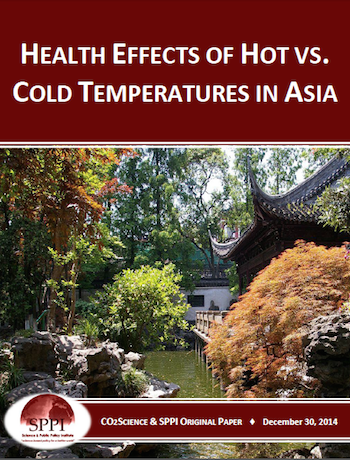
Health Effects of Hot Vs Cold Temperatures in Asia
Health Effects of Hot Vs Cold Temperatures in Asia.
Released On: 1/5/2015
Views: 6732
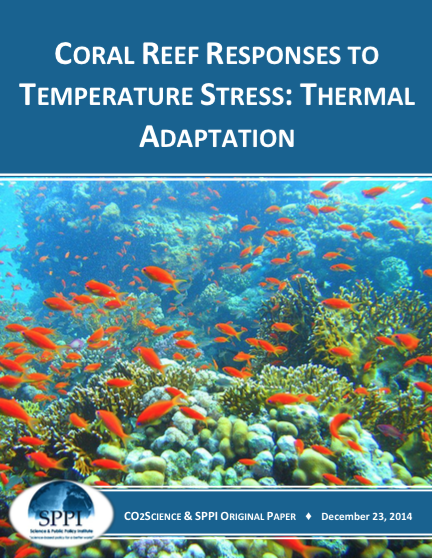
Coral Reef Responses to Temperature Stress: Thermal Adaptation
Coral Reef Responses to Temperature Stress: Thermal Adaptation. As living entities, corals are not only acted upon by the various elements of their environment,they also react or respond to them.
Released On: 12/29/2014
Views: 6363

Forest Growth Response to CO2
Forest Growth Response to CO2. By examining various properties of tree rings, researchers can deduce how historical increases in the air's CO2 concentration have already affected tree productivity and water use efficiency.
Released On: 12/29/2014
Views: 4989

Onward Marches the Great Pause
Onward Marches the Great Pause. Since October 1996 there has been no global warming at all (Fig. 1).
Released On: 12/29/2014
Views: 4031

RESPONSE OF VARIOUS MARINE ANIMALS TO OCEAN ACIDIFICATION AND WARMING
RESPONSE OF VARIOUS MARINE ANIMALS TO OCEAN ACIDIFICATION AND WARMING.
Released On: 12/8/2014
Views: 3688

FACE EXPERIMENTS AND GRASSLAND SPECIES
FACE EXPERIMENTS AND GRASSLAND SPECIES.
Released On: 12/8/2014
Views: 4264

EFFECTS OF OCEAN ACIDIFICATION ON FISH
EFFECTS OF OCEAN ACIDIFICATION ON FISH.
Released On: 12/8/2014
Views: 4278

Response of Fish to Ocean Warming
Response of Fish to Ocean Warming. According to the IPCC, CO2-induced global warming will be net harmful to the world's marine species.
Released On: 11/21/2014
Views: 4188

Long-Term Open-Top-Chamber Study of Sour Orange Trees
Long-Term Open-Top-Chamber Study of Sour Orange Trees. Eight 30-cm-tall sour orange tree (Citrus aurantium L.) seedlings were planted directly into the ground at the Agricultural Research Service's U.S. Water Conservation Laboratory in Phoenix, A ...
Released On: 11/21/2014
Views: 4216
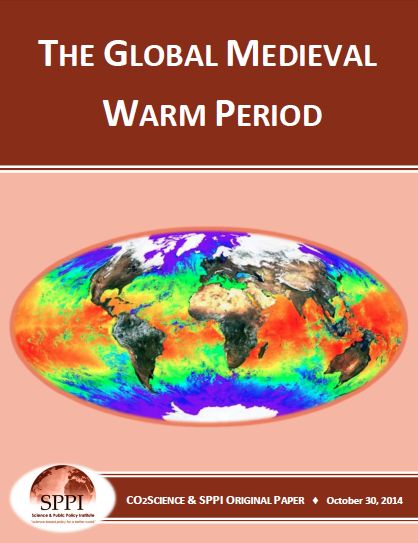
The Global Medieval Warm Period
The Global Medieval Warm Period. Between the 10th and 14th centuries AD, earth's average global temperature may have been warmer than it is today.
Released On: 11/21/2014
Views: 4032
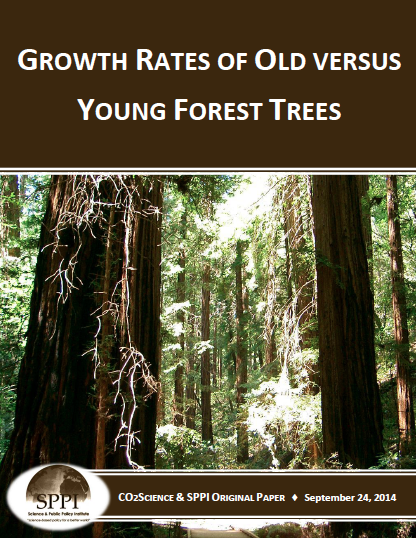
Growth Rates of Old versus Young Forest Trees
Growth Rates of Old versus Young Forest Trees. The planting and preservation of forests has long been acknowledged to be an effective and environmentally-friendly means for slowing climate-model-predicted CO2-induced global warming.
Released On: 9/30/2014
Views: 4293
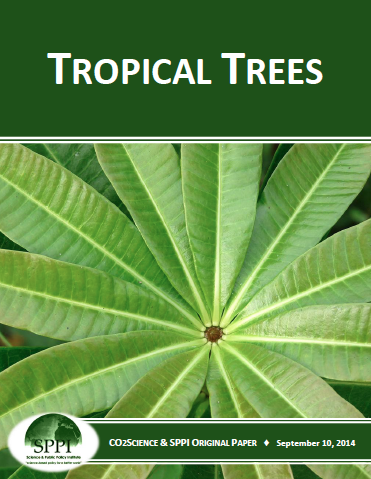
Tropical Trees
Citation: Center for the Study of Carbon Dioxide and Global Change. "Tropical Trees.”
Released On: 9/30/2014
Views: 4358
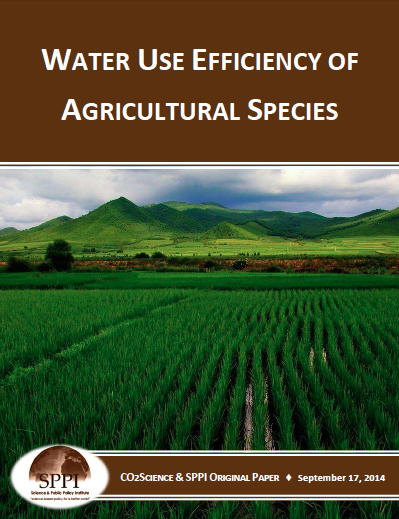
Water Use Efficiency of Agricultural Species
Water Use Efficiency of Agricultural Species.
Released On: 9/30/2014
Views: 4241
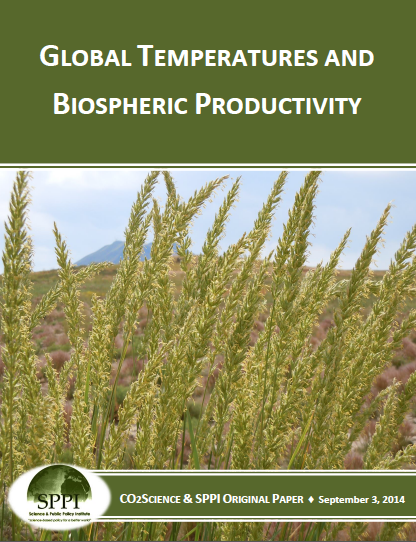
GLOBAL TEMPERATURES AND BIOSPHERIC PRODUCTIVITY
Global temperatures and biospheric productivity. Among the many climate-alarmist fears of CO2-induced global warming is the concern that the productivity of the biosphere will decline if global temperatures rise to the extent predicted by compute ...
Released On: 9/13/2014
Views: 4225
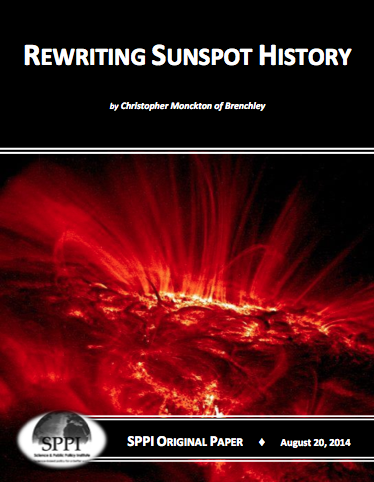
REWRITING SUNSPOT HISTORY
Rewriting sunspot history. In 2006, when I first made the mistake of writing publicly of my doubts about the Party Line on manmade global warming.
Released On: 9/13/2014
Views: 4285
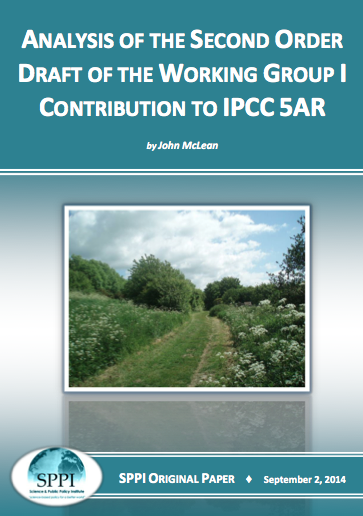
ANALYSIS OF THE SECOND ORDER DRAFT OF THE WORKING GROUP I CONTRIBUTION TO IPCC 5AR
ANALYSIS OF THE SECOND ORDER DRAFT OF THE WORKING GROUP I CONTRIBUTION TO IPCC 5AR. The preparation of IPCC Assessment Reports involves several stages.
Released On: 9/13/2014
Views: 4104
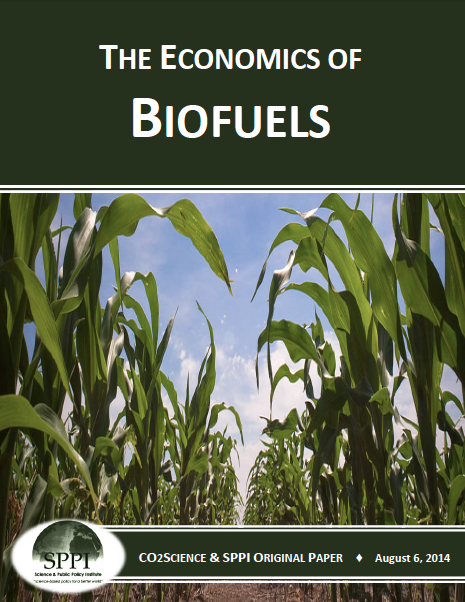
THE ECONOMICS OF BIOFUELS
The economics of biofuels. Aside from rejecting biofuel expansion and use for environmental reasons.
Released On: 9/13/2014
Views: 3946



